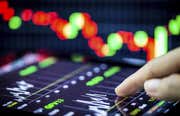The Super Display Book (SDBK) is the NYSE’s automated system that displays, records and executes orders for securities. It was previously known as the SuperDOT system (Super Designated Order Turnaround System), and before that, simply DOT.
The Super Display Book order-routing system is a sophisticated computer program that facilitates the transmission of both market and limit orders directly to the trading post (and Designated Market Makers) where a particular security is traded. This allows for a more efficient transaction because the order can be delivered directly to the DMM rather than phoned down to a floor trader and done manually. It displays such information as order type, quantity, price and timing. Automated systems like SDBK execute orders with speed and accuracy, and provide a layer of security against fraud – which can help control risk.
All listed securities can be traded over the SDBK system. If an order can be executed immediately, the system sends an electronic confirmation to the originating broker-dealer. Any premarket orders that can be matched up are automatically paired by the system and executed at the opening price; if any premarket orders can’t be paired, the SDBK holds the order in queue, and sends an electronic confirmation to the submitting broker after the order is executed.
Most orders placed by individual investors are never handled by a floor broker. Instead, these orders are routed through the SDBK, directly to a DMM for immediate execution. Floor brokers usually handle the larger, more complex institutional trade orders.
Electronic Trading: Electronic Communications Networks (ECNs)
-
 Investing
InvestingThe Basics of Trading a Stock: Know Your Orders
Taking control of your portfolio means knowing what orders to use when buying or selling stocks. -
 Trading
TradingDirect Access Trading Systems
DATs can dramatically speed up order execution - find out how this system gives novice traders an edge. -
 Investing
InvestingThe Auction Method: How NYSE Stock Prices are Set
Find out how the New York Stock Exchange (NYSE) runs an auction process known as open outcry to set stock prices during the opening and closing auctions. -
 Trading
TradingBasics of the Mechanics Behind Electronic Trading
Once associated with shouting traders and wild hand gestures, now statistics and programmers rule.



